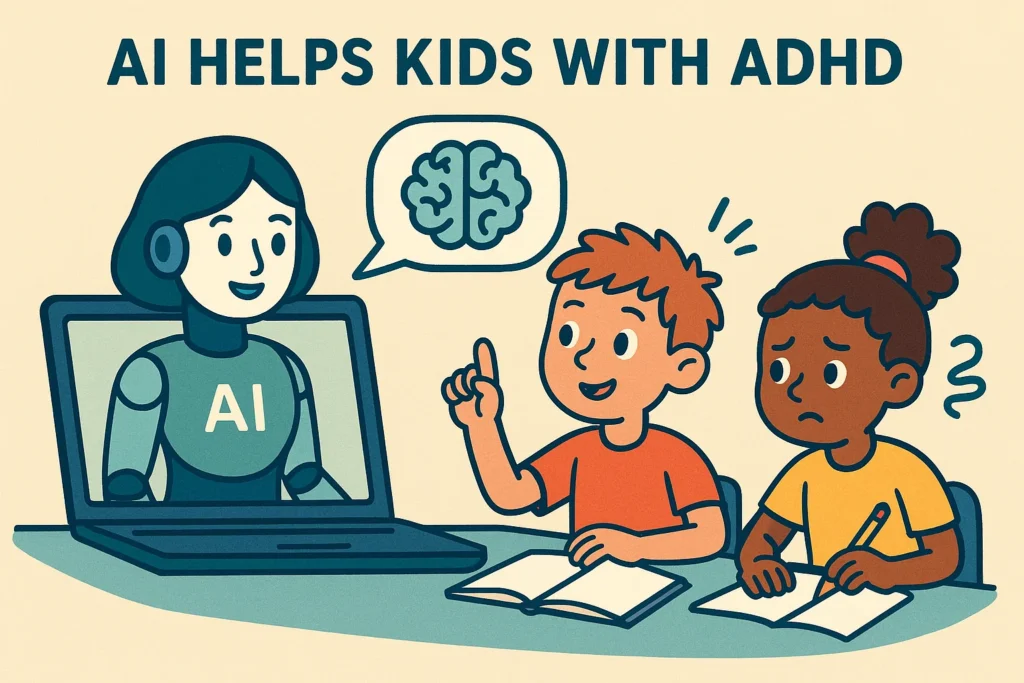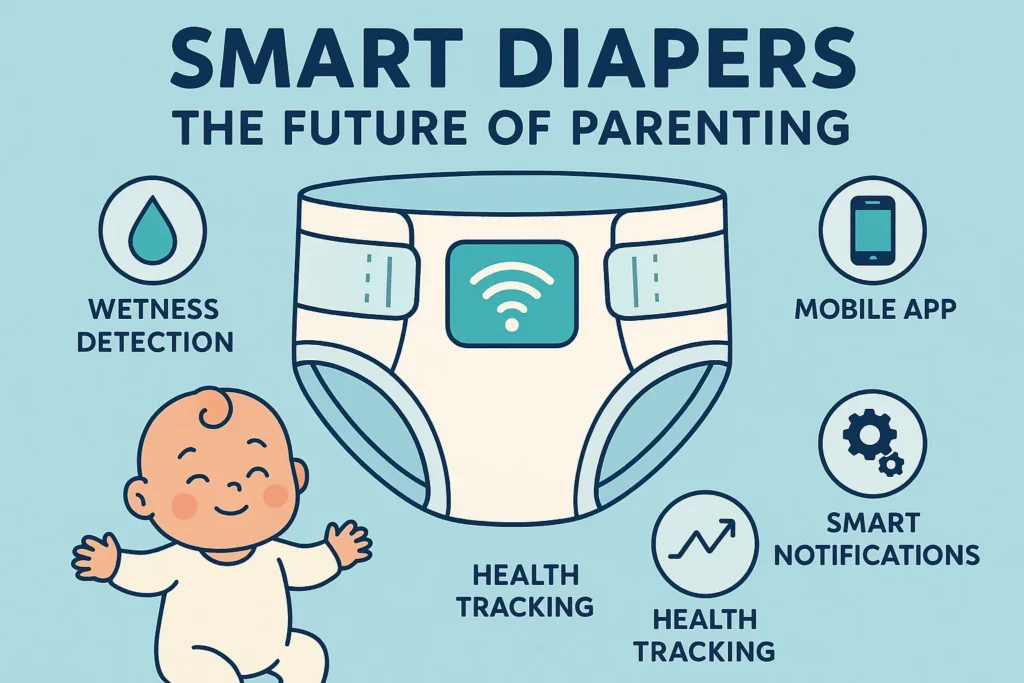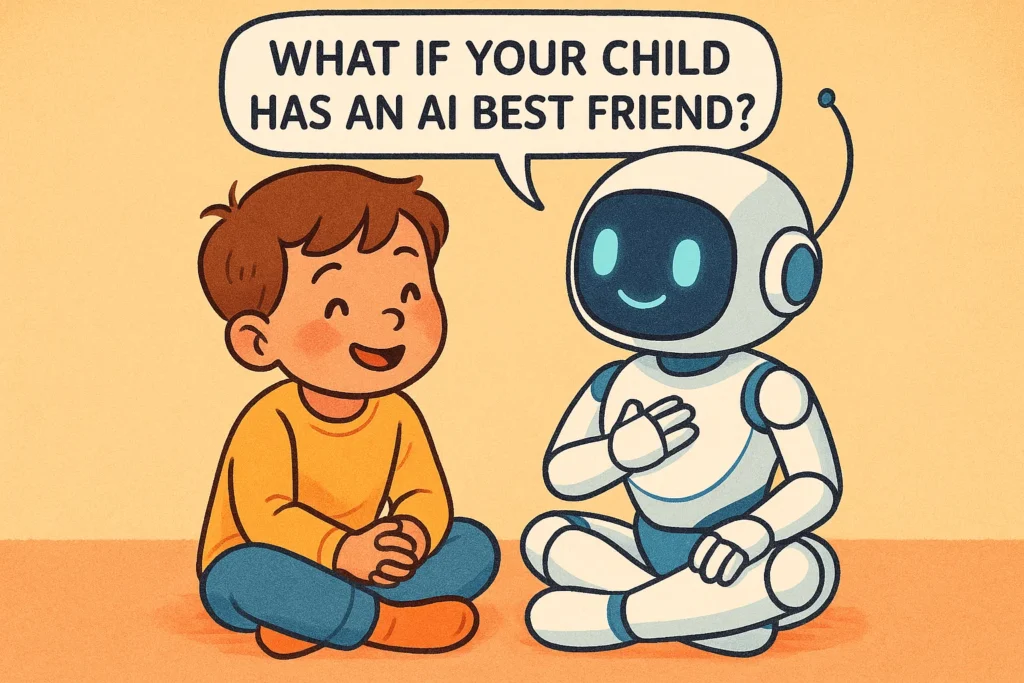🌟 Introduction
At AiBlogQuest.com, we explore how artificial intelligence is reshaping education, health, and everyday life. One of the most promising uses of AI today is how AI helps kids with ADHD — not just in learning, but in understanding themselves better.
Children with Attention-Deficit/Hyperactivity Disorder (ADHD) often struggle with focus, organization, and impulsivity. But AI-powered tools are now giving parents and teachers a new way to support these kids — using data, empathy, and smart design.
🎯 What Is ADHD and Why AI Matters
ADHD affects millions of children worldwide, causing difficulties with attention, restlessness, and impulsivity. Traditional methods — therapy, medication, and parental support — remain essential, but AI introduces personalization and precision that humans alone can’t always provide.
AI can:
-
Analyze attention patterns in real time
-
Suggest adaptive learning strategies
-
Predict emotional triggers before meltdowns
-
Provide instant feedback and motivation
🧩 7 Smart Ways AI Helps Kids with ADHD
1. 🧠 Personalized Learning Tools
AI tutoring systems like CogniFit or Brainly AI adapt lessons based on each child’s strengths and weaknesses, ensuring they stay engaged and not overwhelmed.
2. 🎮 Gamified Attention Training
Apps such as EndeavorRx — the first FDA-approved video game for ADHD — use gamified challenges powered by AI to help children improve focus and cognitive control.
3. ⏰ Smart Scheduling Assistants
AI helps structure a child’s day with visual reminders, alerts, and adaptive time blocks that adjust to the child’s energy levels and attention span.
4. 📈 Behavior Tracking and Insights
Wearables with AI sensors can monitor heart rate, stress, and activity levels, helping parents and therapists spot when a child is struggling or losing focus.
5. 🗣️ Emotion Recognition and Support
AI tools analyze facial expressions and tone to detect frustration, fatigue, or anxiety. Apps like Milo AI teach emotional regulation and social interaction skills.
6. 🧑🏫 Virtual Tutors & Companions
Chatbots and voice assistants can act as study partners that repeat instructions patiently, provide breaks when needed, and even motivate kids using positive reinforcement.
7. 🌙 Sleep and Routine Optimization
AI apps track sleep cycles and recommend bedtime adjustments, which is crucial for kids with ADHD who often struggle with inconsistent sleep patterns.
⚖️ The Benefits vs. Concerns
While AI offers great promise, it also brings challenges.
Benefits:
-
Personalized attention at scale
-
24/7 support and feedback
-
Reduced frustration for parents and teachers
Concerns:
-
Privacy and data security risks
-
Overreliance on digital tools
-
Emotional dependency on AI companions
The key is balance — using AI as a helper, not a replacement for human care.
💡 Real-Life Example
A study at the University of California showed that AI-based learning tools improved the attention span of ADHD students by over 30% when combined with human mentoring. This hybrid model shows how technology can empower rather than replace parents and educators.
🧾 Final Thoughts
AI is not a cure for ADHD — but it’s becoming a powerful ally. When used responsibly, AI helps kids with ADHD focus better, learn smarter, and gain confidence in their abilities. The future of ADHD management lies in collaboration between human empathy and AI intelligence.
🔗 Useful Links – AiBlogQuest.com
-
Parenting Without AI: A Dying Practice?
-
Are Robot Teachers the Future of Education?
❓ FAQ
Q1: Can AI diagnose ADHD in children?
AI tools can assist in identifying ADHD patterns, but a certified psychologist or doctor must confirm the diagnosis.
Q2: Are AI apps safe for kids with ADHD?
Most are safe when parental supervision and privacy settings are enabled. Always check app permissions and reviews.
Q3: Can AI replace therapy for ADHD?
No. AI complements therapy but cannot replace human interaction, empathy, and clinical expertise.



